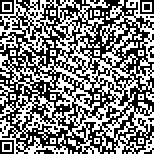| 摘要: |
| [摘要] 目的 分析重度自身免疫性溶血性贫血(AIHA)患者的临床特征及输注不同类型红细胞成分的疗效。方法 选取接受输血治疗的83例重度AIHA患者,按患者输注红细胞成分的种类分为三组:A组(27例)输注ABO+Rh同型洗涤红细胞,B组(28例)输注ABO+Rh同型去白细胞红细胞,C组(28例)输注ABO+Rh同型悬浮红细胞。根据指标血红蛋白(Hb)、红细胞计数(RBC)、网织红细胞百分数(Ret%)、总胆红素(TBIL),在对比分析患者临床特征和血清学特征的基础上,分析对比各组输血治疗效果和输血不良反应。结果 三组患者中继发性AIHA病因主要为结缔组织病和血液系统疾病。在直接抗人球蛋白试验中,致敏在红细胞上的抗体主要为IgG+C3d,其次为IgG,三组试验结果比较差异无统计学意义(P>0.05)。在抗体筛查和抗体鉴定试验中,不规则抗体主要为自身抗体+同种抗体,其次为有血型特异性的自身抗体,三组试验结果比较差异无统计学意义(P>0.05)。输注红细胞前,各组Hb、RBC、Ret%和TBIL差异无统计学意义(P>0.05)。输注红细胞后,各组Hb和RBC水平显著高于输血治疗前(P<0.05),Ret%和TBIL水平显著低于输血治疗前(P<0.05)。A组输注血液成分的有效率为71.11%,B组为66.67%,C组为68.89%,三组差异无统计学意义(P>0.05)。结论 在重度AIHA患者治疗中,在排除同种异体抗体干扰的情况下,输注同型洗涤红细胞、同型去白细胞红细胞和同型悬浮红细胞疗效均无显著差异,选择ABO+Rh同型去白细胞红细胞或悬浮红细胞更为便捷,不需要进行洗涤处理。 |
| 关键词: 自身免疫性溶血性贫血 血液成分 输血 自身抗体 同种抗体 |
| DOI:10.3969/j.issn.1674-3806.2022.08.06 |
| 分类号:R 457.1 |
| 基金项目:西南医科大学校级大学生创新创业训练项目 |
|
| Analysis on the clinical characteristics of patients with severe autoimmune hemolytic anemia and the efficacy of transfusions of different types of red blood cell components |
|
WANG Jing, YU Fan, FENG Yu-ting, et al.
|
|
Department of Blood Transfusion, the Affiliated Hospital of Southwest Medical University, Sichuan 646000, China
|
| Abstract: |
| [Abstract] Objective To analyse the clinical characteristics of patients with severe autoimmune hemolytic anemia(AIHA) and the efficacy of transfusions of different types of red blood cell components. Methods Eighty-three severe AIHA patients who received blood transfusion were selected and divided into three groups according to the transfusions of different types of red blood cell components: group A(27 cases) in which the patients were transfused with ABO+Rh homotype washed red blood cells, group B(28 cases) in which the patients were transfused with ABO+Rh homotype leukocyte-depleted red blood cells and group C(28 cases) in which the patients were transfused with ABO+Rh homotype suspended red blood cells. According to the indicators of hemoglobin(Hb), red blood cell count(RBC), reticulocyte percentage(Ret%), total bilirubin(TBIL), on the basis of comparative analysis of the clinical and serological characteristics of the patients, the effects of blood transfusion treatment and adverse blood transfusion reactions were analyzed in each group and compared among the three groups. Results The etiology of secondary AIHA in the patients of the three groups was mainly connective tissue diseases and hematological diseases. In the direct anti-human globulin test, antibodies sensitized to red blood cells were mainly IgG+C3d, followed by IgG, and there were no significant differences in the test results among the three groups. In antibody screening and antibody identification tests, irregular antibodies were mainly autoantibodies+isoantibodies, followed by blood group-specific autoantibodies, and there were no significant differences in the test results among the three groups(P>0.05). Before transfusion of red blood cells, there were no significant differences in Hb, RBC, Ret% and TBIL among the three groups(P>0.05). After transfusion of red blood cells, the levels of Hb and RBC in each group were significantly higher than those before transfusion of blood components(P<0.05), and the levels of Ret% and TBIL were significantly lower than those before transfusion of blood components(P<0.05). The effective rate of transfusion of blood components was 71.11% in group A, 66.67% in group B and 68.89% in group C, and there was no significant difference among the three groups(P>0.05). Conclusion In the treatment of patients with severe AIHA, in the case of eliminating the interference of allogeneic antibodies, there is no significant difference in the efficacy among the three transfusions of homotype washed red blood cells, homotype leukocyte-depleted red blood cells and homotype suspended red blood cells. It is more convenient to choose ABO+Rh homotype leukocyte-depleted red blood cells or suspended red blood cells, because of no need to do the wash treatment. |
| Key words: Autoimmune hemolytic anemia(AIHA) Blood component Blood transfusion Autoantibody Alloantibody |

